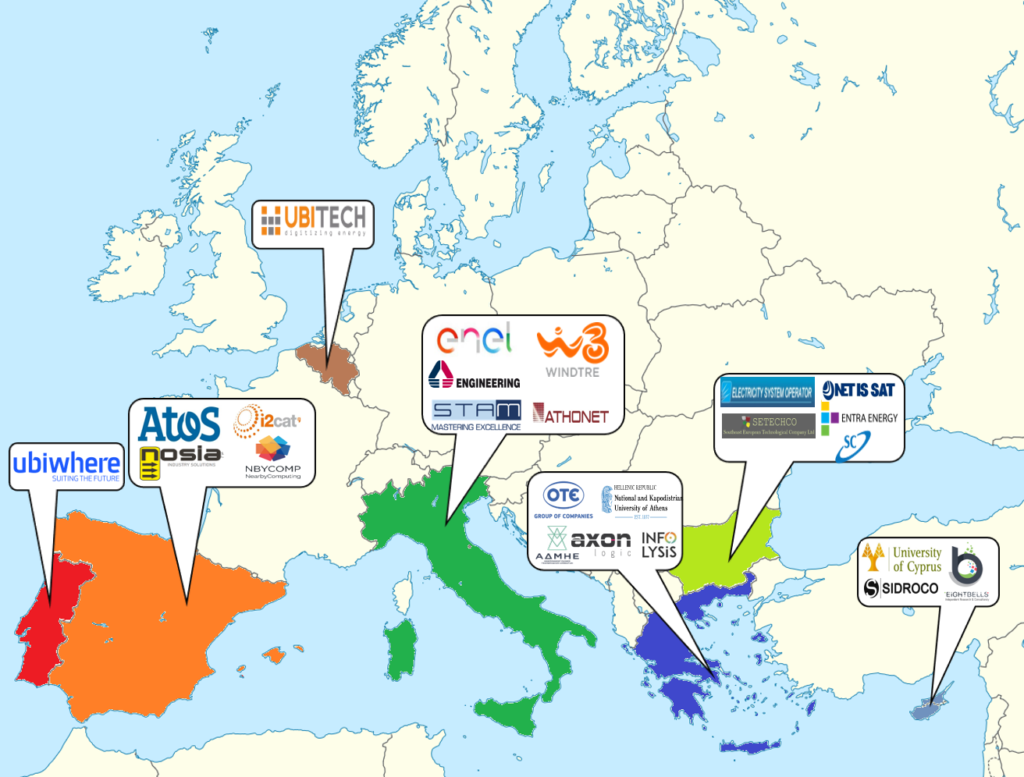The Smart5Grid consortium is formed by participants that together form a complete group with many areas of expertise, capable of achieving the demanding project goals. The most important quality of the consortium is the balance it has, so that all important sectors of the utilities, industry, SMEs, research institutes and academia are represented in Smart5Grid. The consortium consists of a critical mass of industrial/commercial partners, and includes large companies’ and SMEs, along with complementary skills obtained from research institutes and universities, as well as DSOs/TSOs to participate in the demonstration phase and to help to validate the ambitious goals of Smart5Grid.
The proposed system architecture, the developed NetApps, and the 5G platform will involve several complementary strategies and techniques covering many specific domains. The partners of Smart5Grid were carefully selected to provide such complementary skills and competences, which adequately cover all the project objectives and activities, starting from the generation of ideas, to analysis of requirements, to specification and design, implementation, system integration, up to NetApps demonstration and validation, dissemination and exploitation. In the following, the composition of the consortium with respect to each expertise domain is described, along with partner types and geographical balance, and technical and business complementarities, in order to address the project requirements in achieving the aimed results and impacts of 5G into the automation and liberalization of the energy sector.
The Smart5Grid consortium is comprised of: Three large network operators (WI3, OTE, NIS); Three large power grid operators (ENEL, IPTO, ESO); Two large industries (ATOS, ENG); One research centre (i2CAT), Two universities (UoA, UCY) and Thirteen SMEs (8BELLS, ATH, UW, NBC, UBE, SID, INF, SC, EE, AXON, NOSIA, SETECHCO, STAM).
Given the great innovation potential of the Smart5Grid, which stems from the technological standpoint, the big business opportunities and the market perspectives that will be introduced by Smart5Grid, the participant SMEs will have the unique opportunity to work close with leading energy stakeholders, opening the door for collaborations beyond the project duration.
It should be mentioned that SMEs in Smart5Grid are assigned a considerable share of the project, representing the 54% of the project partners in number and 47.5% of the project budget (total costs). This is quite high for a project like Smart5Grid, whose success and market impact greatly relies on the support of big industrial partners (vendors, utilities, and service providers) and up-to-now could not be solely driven by SMEs.
Geographical Balance of the Consortium
Smart5Grid consortium consists of partners coming from seven European countries as illustrated in the following figure. Apart from each partner’s special skills and expertise, past collaborations and experience were also considered while forming the consortium.


